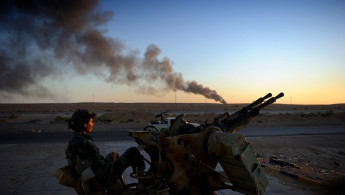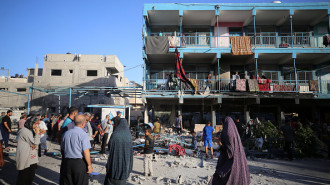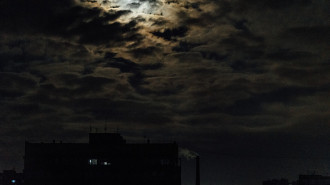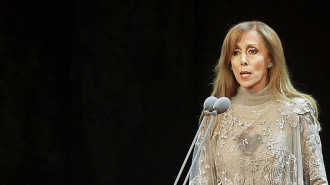Uranium said missing by IAEA in Libya recovered: military
More than two tonnes of natural uranium reported missing by the UN's nuclear watchdog in war-scarred Libya have been found, a general in the country's east said Thursday.
General Khaled al-Mahjoub, commander of eastern strongman Khalifa Haftar's communications division, said on his Facebook page that the containers of uranium had been recovered "barely five kilometres (three miles)" from where they had been stored in the Sabha area of southern Libya.
Earlier Thursday the International Atomic Energy Agency (IAEA) in Vienna reported that 2.5 tonnes of the material had gone missing from a Libyan site and "may present a radiological risk", according to a confidential report seen by AFP.
Uranium ore concentrate is considered to emit low levels of radioactivity.
IAEA inspectors on Tuesday found that "10 drums containing approximately 2.5 tonnes of natural uranium in the form of uranium ore concentrate... were not present" as previously declared at the location, it said.
The substance is commonly known as "yellowcake", a powder consisting of around 80 percent uranium oxide. It is used in the preparation of nuclear fuel for reactors, and can also be enriched for use in nuclear weapons.
The site "is currently not under the regulatory control of Libya's state authority", the report said, without identifying the site or saying why Libya was in possession of the material.
Libya has been mired in crisis since dictator Muammar Gaddafi's overthrow in a 2011 NATO-backed uprising, with a myriad of militias forming opposing alliances backed by foreign powers.
The North African country remains split between a nominally interim government in the capital Tripoli in the west, and another in the east backed by Haftar.
Mahjoub published a video showing a man in a protective suit counting 18 blue containers, the total that had been stored at the site.
#BREAKING
— Libya Review (@LibyaReview) March 16, 2023
The Libyan Army has claimed to have found the 10 missing drums containing approximately 2.5 tons of natural Uranium.https://t.co/PzK4AXb3CT#Libya #LibyaReview pic.twitter.com/irTrWVZhRA
"The situation is under control. The IAEA has been informed," Mahjoub told AFP.
He suggested the containers had been stolen and then abandoned by "a Chadian faction who thought they were weapons or ammunition".
Profiting from Libya's years of chaos and porous borders in the desert region, fighters from neighbouring Chad and Sudan established rear bases in Libya's south.
An inspection of the site had initially been scheduled for 2022 but had to be postponed due to the "security situation in the region", the IAEA report said.
It said the location was routinely monitored by the IAEA through commercial satellite imagery and other open-source information.
It was through analysing these images that the agency decided to make a physical inspection, despite the security risk and logistical challenge, it said.
On Facebook, Mahjoub said that after the inspection revealed the disappearance, Haftar-linked forces recovered the containers.
Libya under Gaddafi had a suspected nuclear weapons programme, which it scrapped in 2003.





 Follow the Middle East's top stories in English at The New Arab on Google News
Follow the Middle East's top stories in English at The New Arab on Google News


